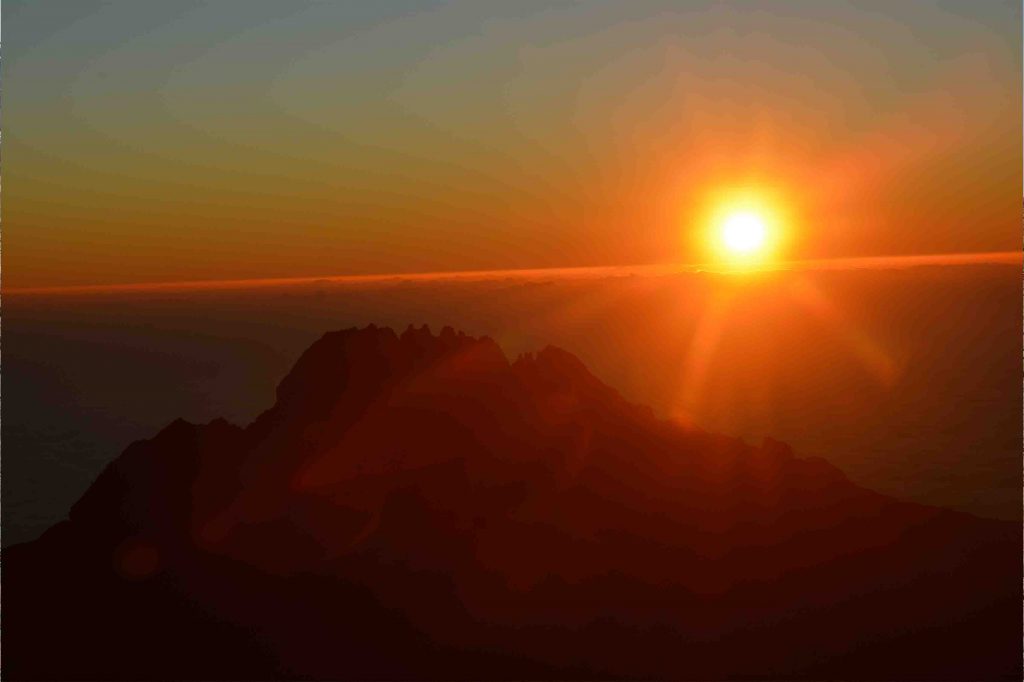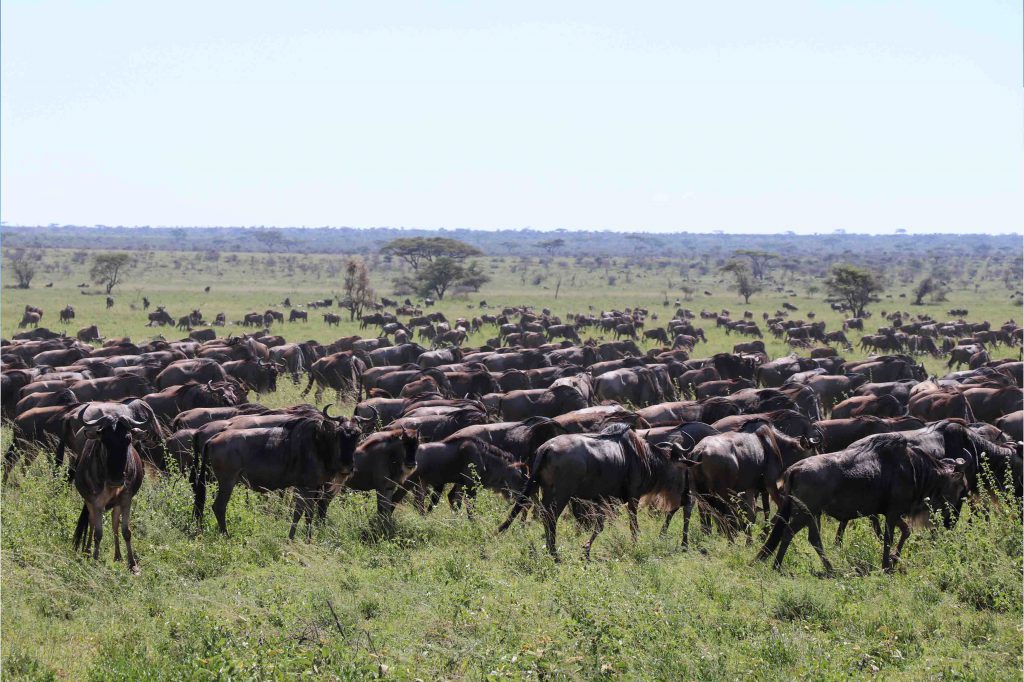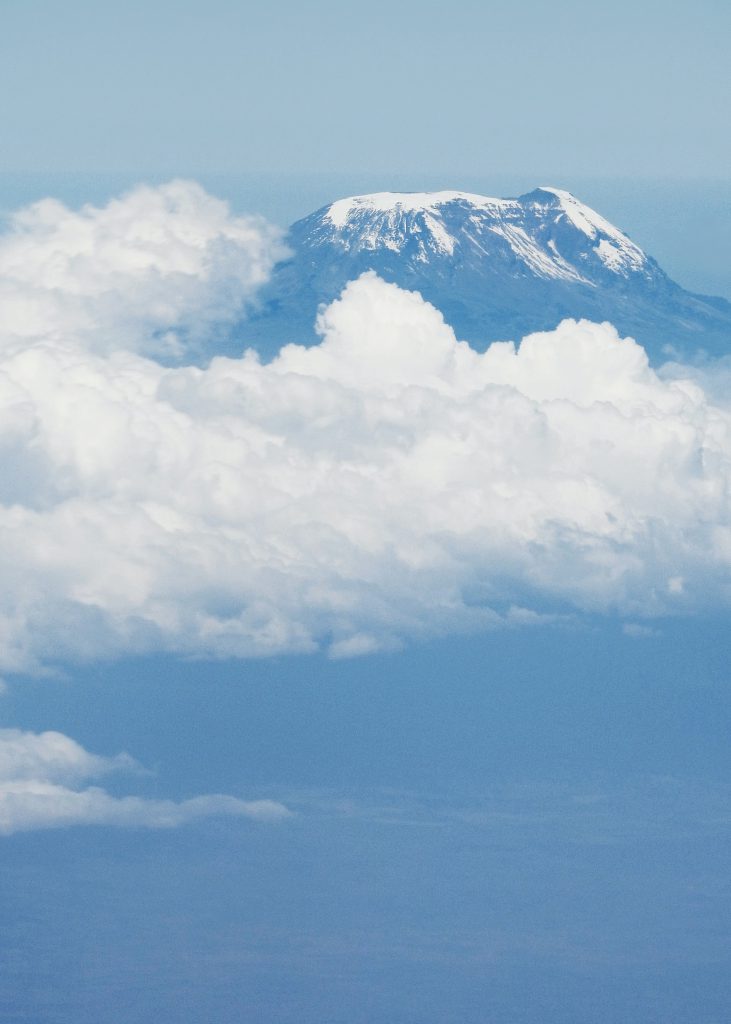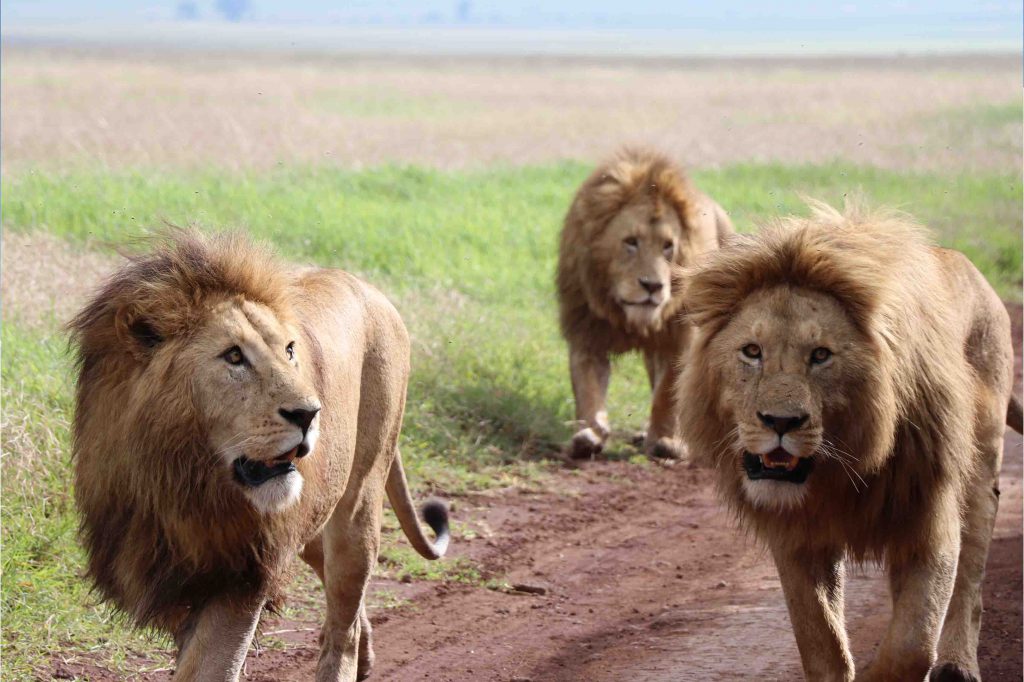National parks
Between the Ngorongoro Highlands, Lake Victoria and Tanzania’s northern border with Kenya stretches one of the world’s last great wildlife refuges – the Serengeti. The name comes from the Maasai “siringet,” meaning “endless plains”. The Serengeti’s 14,763 square kms contains about three million large animals, most taking part in seasonal migrations, unparalleled in nature. Twice a year, triggered by the rains, 1.4 million wildebeest, 300,000 zebra and 300,000 Thomson’s gazelle gather to undertake the long trek to new grazing lands. The migration of the herbivores roughly defines the boundaries of Serengeti National Park, which is the central zone of the Serengeti ecosystem, an area that also takes in Kenya’s Maasai Mara National Reserve, the Ngorongoro Conservation Area and the Maswa Game Reserve in the west. Within this 25,900 square kms of varied landscape live thirty-five species of plains game and 500 bird species.
Serengeti
National Park
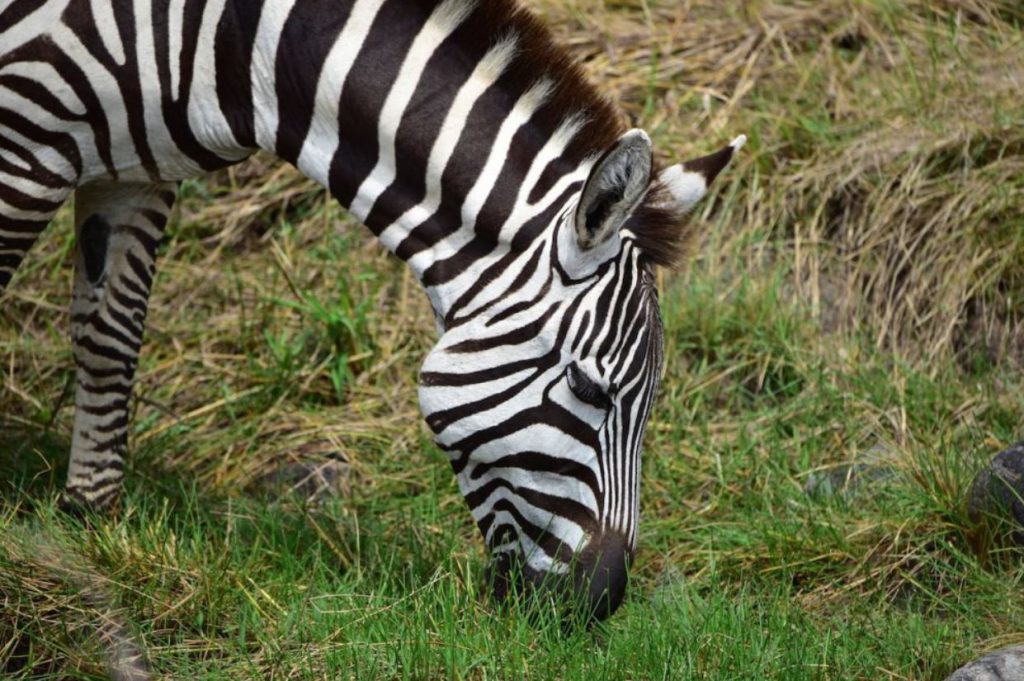
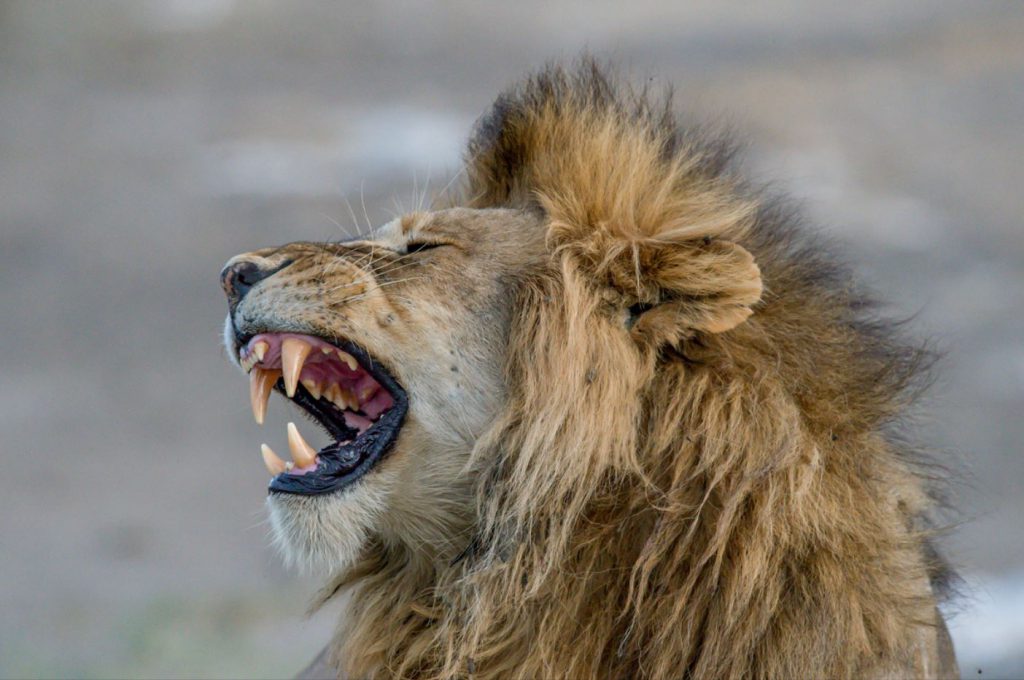
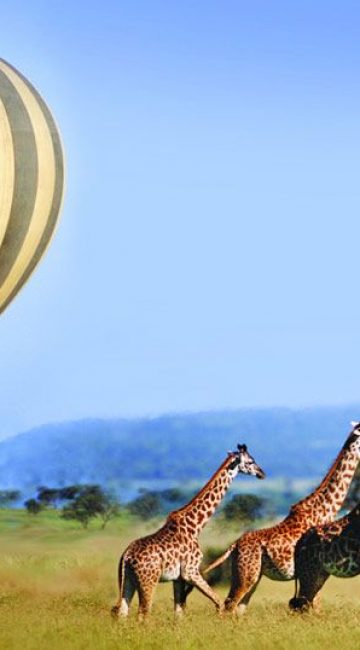
The Ngorongoro Conservation Area covers 2286 sq km and encompasses the volcanic area around the Ngorongoro Crater – including the still active volcano of Oldonyo Lengai and the famous Olduvai Gorge. Its centerpiece, the Ngorongoro Crater, is the largest unbroken caldera in the world and the first sight of it is breathtaking. The floor of the crater is only 100 sq miles but is home to around 30,000 animals with a high concentration of predators. The crater supports up to 25,000 large mammals. Grazers dominate: zebra, wildebeest – accounting for almost half the animals – gazelle, buffalo, eland, hartebeest and wart hog. Giraffe, for example, stay away because there is insufficient food at tree level; topi because they compete directly with wildebeest.
Ngorongoro
Conservation Area
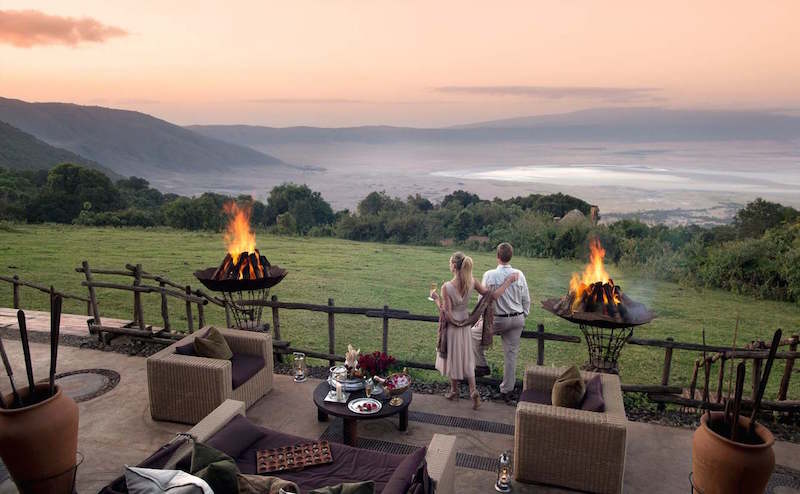

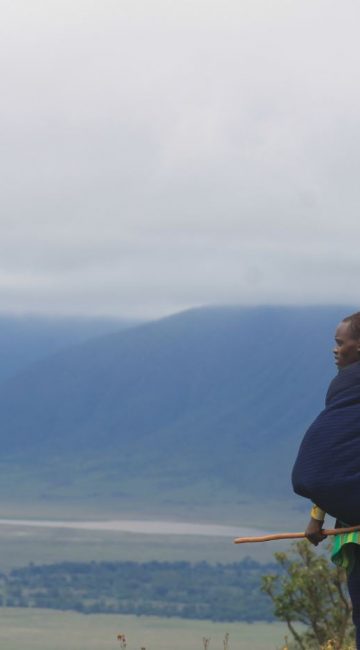
Tarangire National Park derives its name from the Tarangire River that rises in the highlands of central Tanzania and winds its way through the game sanctuary. The river irresistibly lures the herds of plains migrants from the parched surrounding area to its shrunken – but permanent – brackish waters during the dry season. The animals come by thousands from as far north as the shores of Lake Natron, dramatically swelling the resident population with wildebeest, zebra, eland, elephant, hartebeest, buffalo and fringe-eared Oryx. Hence, a leisurely drive along this “river of life”, guarantees spotting of lots of animals – both resident and migrants.
Tarangire
National Park
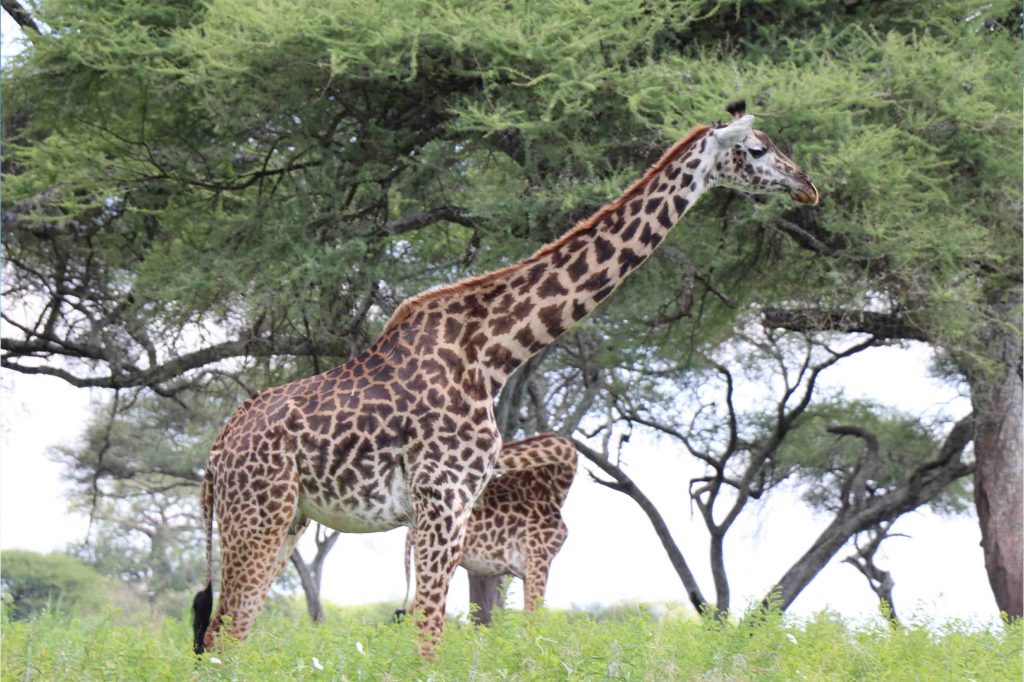
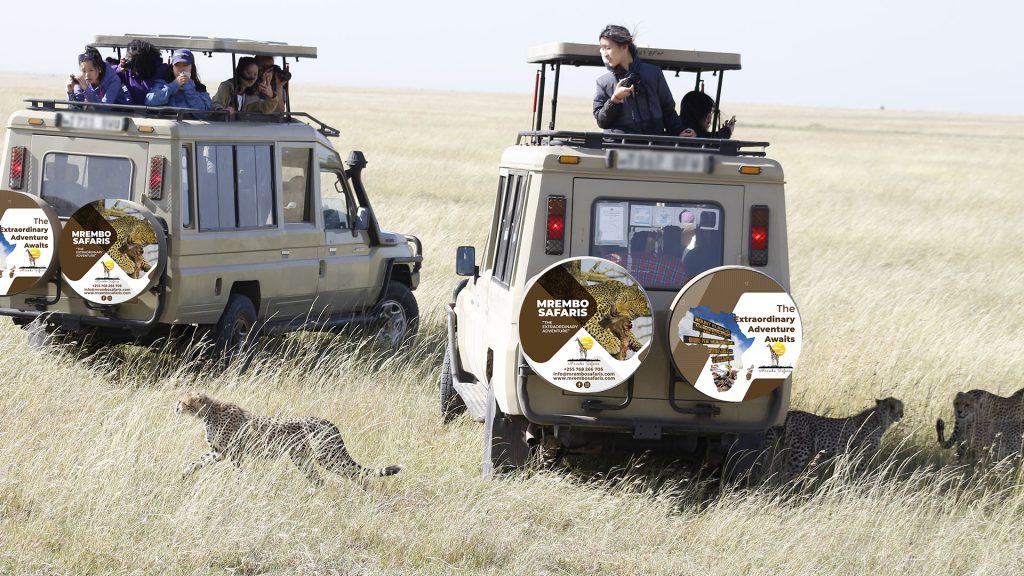
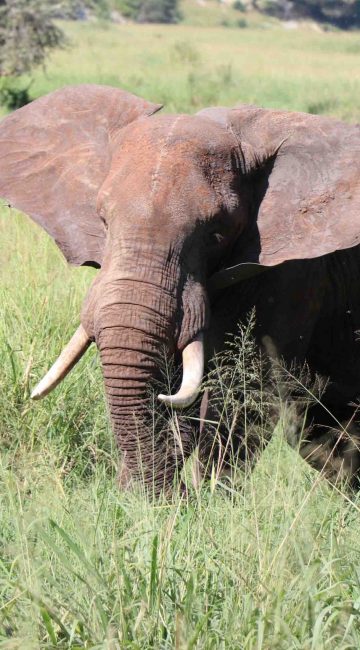
Entering the park the tall trees surround the ground forest. In many ways it resembles a tropical rainforest – with its verdant foliage and variety of bird life – the difference being these trees are supported by a water supply from underneath rather than by abundant rainfall. Following the formation of the Rift Valley, streams cascaded down the rocky walls and, because there was no outlet, a lake was formed. It was at its largest about a quarter of a million years ago. The average area of the lake is around 390 square kilometers varying from year to year. The lake harbours abundant aquatic life ranging from pink flamingoes to elegant pelicans. The hippos are no doubt commandingly noticeable in the inlets of various rivers & rivulets feeding this lake with fresh water. At the far southern end of the park, are some Hot water springs owing to the vulcanicity which the whole region went through, about a million years ago. Perfectly popular are the tree-climbing lions of this park – they are known to take this position especially during the dry season on the low-lying branches of the dominant umbrella acacias.
Lake Manyara
National Park
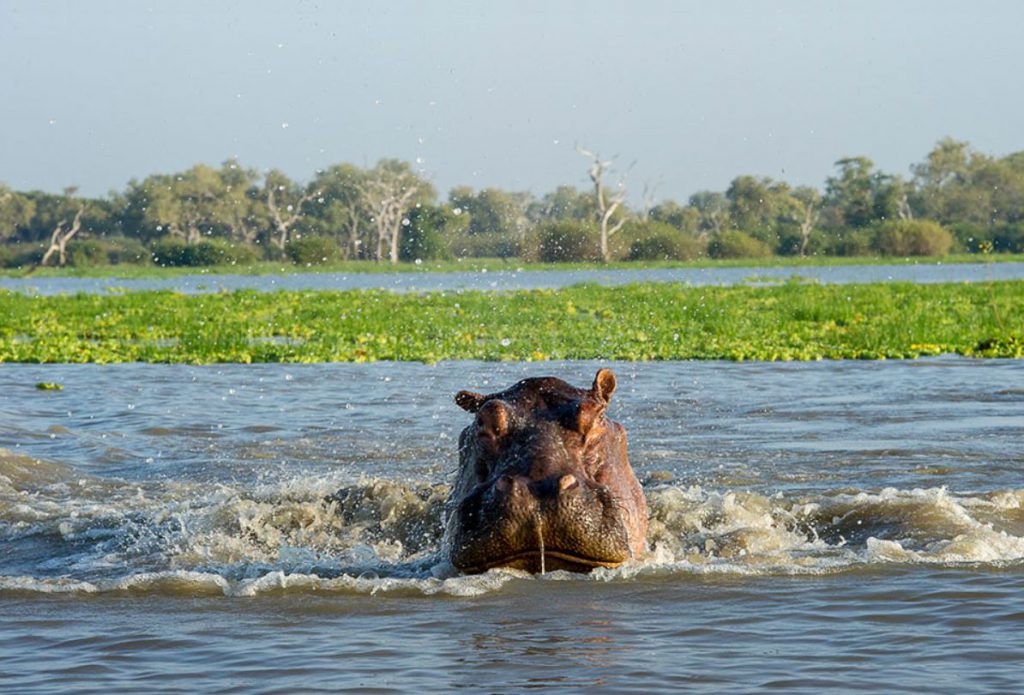
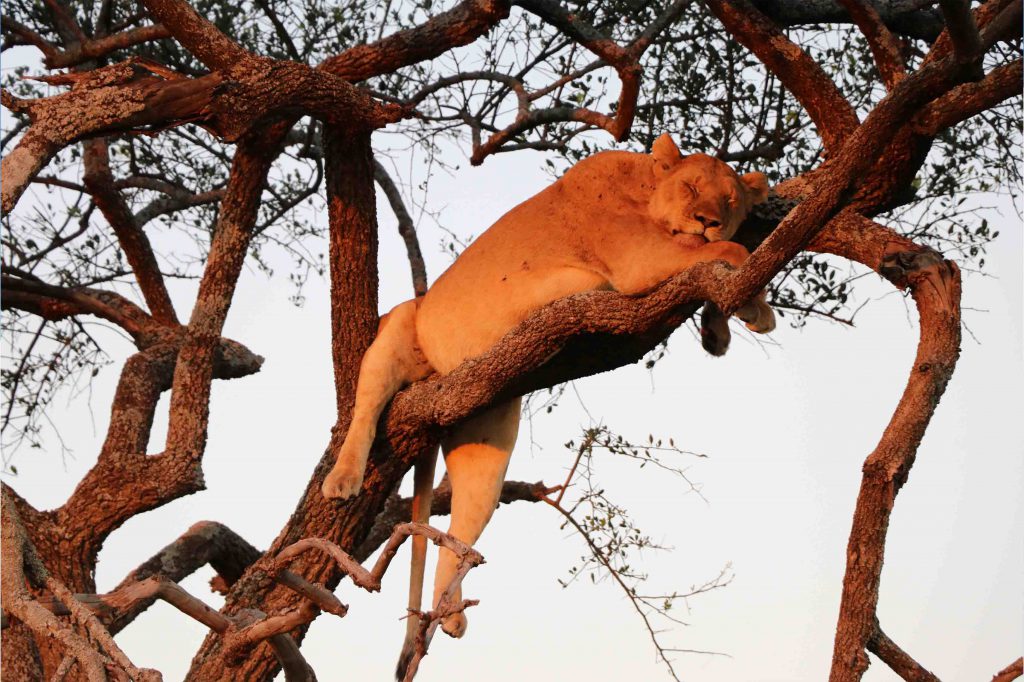
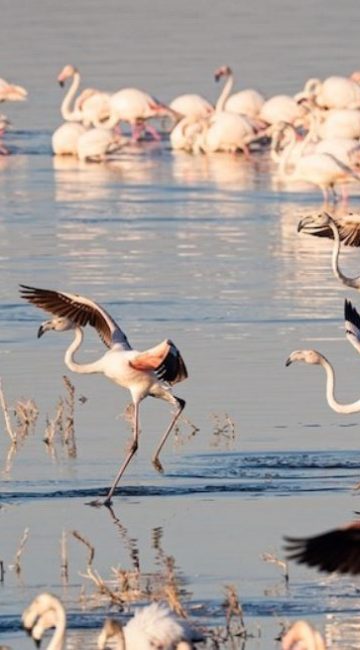
Arusha National Park is a secret jewel of many facets. It is not only the closest National park to Arusha town, but also one of the most beguiling. This is a treasure, a rich tapestry of habitats, teeming with animal and birds. The park has three distinct zones that contribute to its variety and beauty: the lush swamps of Ngurdoto Crater; the tranquil beauty of the Momella lakes, each a different hue; and the chill rocky alpine heights of Mount Meru rising to 4,566 metres (14,990 feet). Zebra graze on red grasslands, wide-eyed dik dik dart into scrubby bush-like overgrown hares on spindly legs. Duikers lurk shadowy forests that are draped with waterfalls. Reedbuck pick through marshy pools. There are more than 400 species of birds. Fluffy-tailed black and white colobus monkeys riot in the damp forest mists. Giraffes glide across the grassy hills. In the distance Mount Kilimanjaro watches over all. But it is her unassuming cousin, Mount Meru that dominates, offering unparalleled views of the famous neighbour.
Arusha
National Park
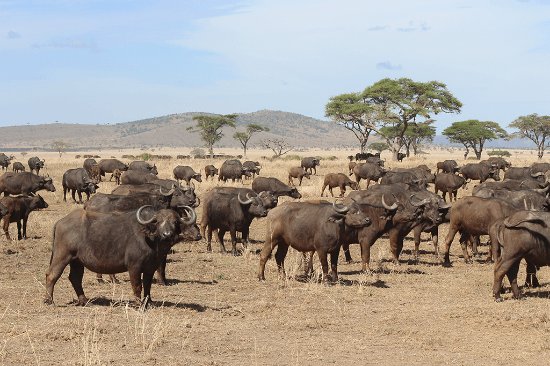
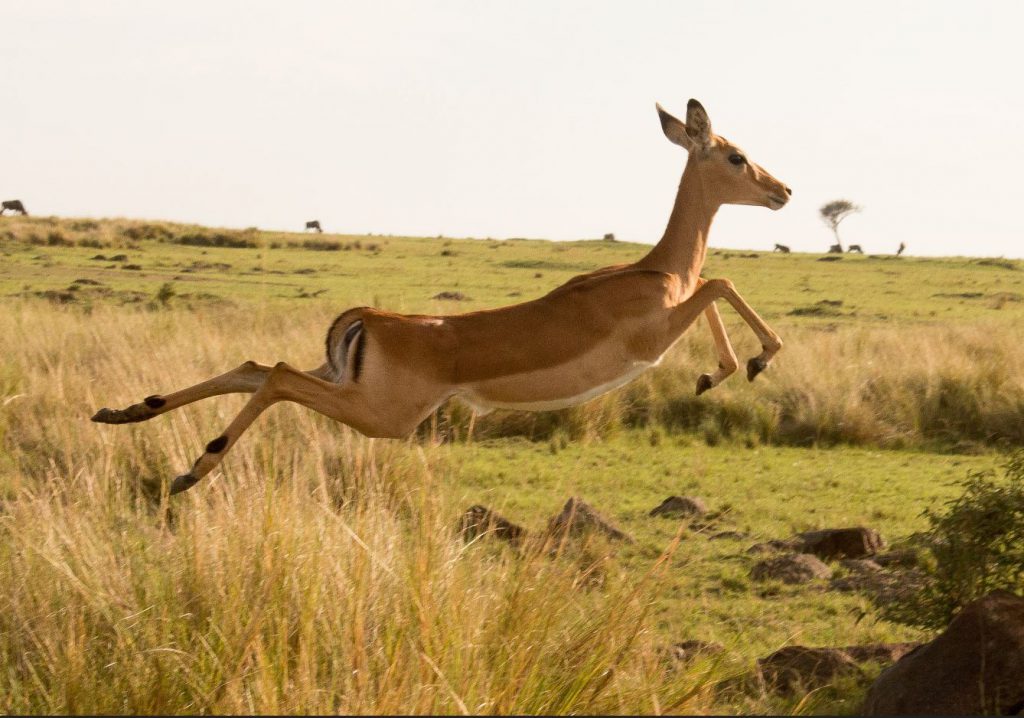
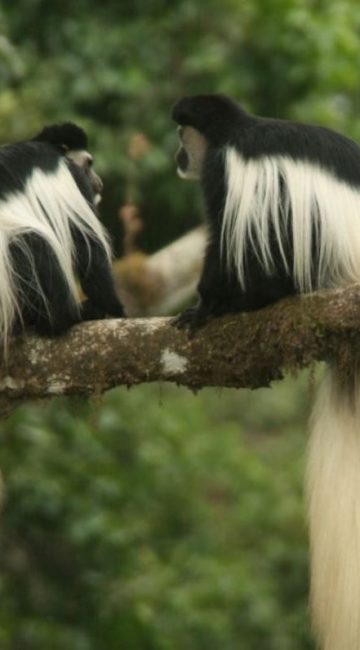
Mrembo Short Gallery Collection
